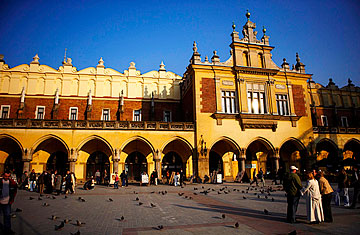
The Gallery of 19th Century Polish Art
Poland is undergoing a museum boom. Decades of underinvestment are being remedied thanks to generous E.U. funding and healthy economic growth, and museum projects are sprouting nationwide. Many of them feature interactive and multimedia elements — refreshing novelties in a country where an exhibition used to mean dusty cases and roped-off displays. The changes are being most keenly felt in the country's second city, Krakow, where four museums have been established or overhauled in the past nine months. Check out Poland's revamped cultural capital.
Museum of Contemporary Art in Krakow
MOCAK, the city's first contemporary-art museum, is designed by Italian architects Claudio Nardi and Leonardo Proli and housed in Holocaust hero Oskar Schindler's former enamel factory, adding cultural glamour to a previously neglected industrial area. It formally opens its doors in May, with shows by Ane Lan, Maurycy Gomulicki and others. See mocak.com.pl.
Schindler's Factory
Adjoining MOCAK, in the administrative buildings of Schindler's old factory, is a multimedia museum documenting life in Krakow under Nazi occupation from 1939 to '45. Featured are Schindler's office, contemporary film footage, period artifacts, sound effects, re-creations of resistance-fighter hideouts and the stories of countless survivors. Details at mhk.pl.
The Gallery of 19th Century Polish Art
Krakow's oldest public gallery, housed in the magnificent Renaissance Cloth Hall, reopened in September, after a three-year refurbishment brought it into the 21st century and added a wonderful rooftop café. The 19th century Polish art remains but can be viewed anew with state-of-the-art visual aids. Further information at muzeum.krakow.pl.
Podziemia Rynku
Four meters beneath Krakow's beautiful market square, the latest technology and $12.5 million have unearthed 1,000 years of history in the form of fascinating ruins and artifacts. Visitors enter though a wall of mist, which doubles as a screen reflecting scenes of medieval life in Krakow. See podziemiarynku.pl.
